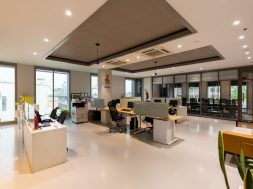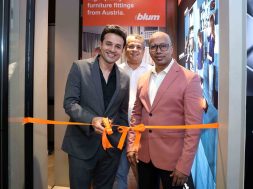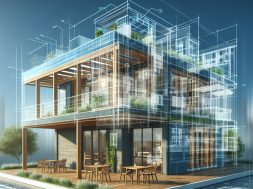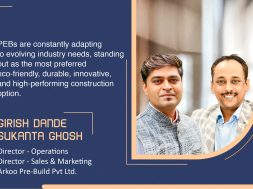HVAC units perform better with regular maintenance and retrofitting

This interaction delves into high-rise HVAC systems’ installation, maintenance strategies, and challenges. The discussion also highlights the steps to be undertaken to ensure energy efficiency.
What are the biggest challenges facing the HVAC industry today in the context of high rises?
One of the biggest challenges in high-rise buildings is maintaining the desired temperature and humidity while ensuring energy efficiency. Similarly, planning a proper centralised HVAC system with good energy efficiency for hotels and commercial high-rise buildings is also a challenge. A well-planned variable refrigerant flow (VRF) system is ideal for residential high-rise buildings to ensure high performance and maintenance.
Fire is a major threat in high-rise buildings. How do you ensure smoke control in these buildings? Please explain your methods.
Staircases or service areas in high-rise buildings can quickly fill with smoke in the event of a fire. So, to keep staircases free of smoke, they must be pressurised. Smoke curtains should also be installed at the head of staircases and elevators. Installing horizontal smoke curtains in lobbies and service areas also helps to prevent smoke from spreading to other areas.

What are some of the latest methods for increasing the energy efficiency of HVAC systems?
These methods include installing programmable controls and thermostats along with variable-frequency drives for air handling units (AHUs), using aerosol duct sealing to avoid duct leakages, retrofitting old AHUs with new AHUs, retrofitting plug fans with axial fans instead of centrifugal fans, and using IEC-4 motors with permanent magnets, which provide energy savings.
Installation and maintenance are two critical aspects of HVAC units. Please elaborate on the strategies you undertake for efficient installation and maintenance of HVAC systems in high-rise buildings to ensure minimum breakdown.
Installation of indoor and outdoor units plays an important role in maintenance and energy savings in HVAC units. Proper heat load calculation and correct sizing of units ensure optimal performance—proper and regular maintenance of chiller tubes, pump filters, and greasing of motors. Ensuring proper alignment of AHU belts, greasing, and bearings lubrication is also important. Indoor units should not be installed near or above access doors. Outdoor units should be installed where proper natural air ventilation is available and should not be installed under direct sunlight. Ascertaining these aspects will ensure the smooth and hassle-free functioning of HVAC systems.
How can we prioritise sustainability and energy efficiency in HVAC systems?
Prioritising sustainability and energy efficiency in HVAC systems is of utmost importance. The SEER rating of the system must always be a minimum of 14.5. Regularly checking power consumption at peak load conditions and part load conditions will indicate if the power consumption is high or appropriate. Based on this, maintenance strategies can be initiated, indirectly contributing to sustainability. Conducting energy audits regularly also will give an idea of energy efficiency and the ways to improve it.
Cookie Consent
We use cookies to personalize your experience. By continuing to visit this website you agree to our Terms & Conditions, Privacy Policy and Cookie Policy.










